When Drive Meets a Wall
Feeling stuck in life? Every professional encounters a moment where once-thrilling goals feel heavy, progress slows, and clarity vanishes. This feeling stuck sensation doesn’t mean failure—it’s a natural neurochemical and psychological state. Studies in neuroscience reveal that our brains are wired for stability over uncertainty. When your work becomes predictable, dopamine—the neurotransmitter behind motivation and desire—decreases. That biological dip deflates ambition, dampens curiosity, and halts forward motion.
For high achievers, this creates a frustrating paradox: the more successful and established you become, the lower the novelty and dopamine that once fueled your early wins. Recognizing this isn’t weakness—it’s the biology of adaptation at work.
The Neuroscience of Stuckness
Neuroscience explains that the brain’s default mode network (DMN) constantly cycles through self-referential thought—replaying past experiences, analyzing future outcomes, and trying to ensure safety. When you feel uncertain about your next steps, this network becomes overactivated, leading to paralysis by analysis. The prefrontal cortex, which is responsible for planning and decision-making, can become overwhelmed by too many conflicting options.
Meanwhile, the amygdala—your brain’s alarm system—tags change as potential danger. Even if you crave something new, your nervous system misinterprets novelty as a threat, making staying “stuck” feel oddly safer than movement. That’s why professionals often resist change even when they intellectually know it’s needed.
Fear, Fatigue, and the False Comfort of Routine

From a neuroevolutionary standpoint, the brain values efficiency over progress. It seeks the path of least resistance by automating familiar patterns. When daily tasks become routine, they move into basal ganglia territory—efficient but dull. You perform well yet feel disengaged. That disengagement reduces dopamine further, creating a loop of low reward and low energy.
Staying in comfort zones momentarily reduces stress, but over time, it triggers something deeper: neural boredom. A stagnant brain begins craving stimulation, yet lacks the momentum to act. The longer this persists, the easier the brain normalizes it, reinforcing professional inertia as the “new normal.”
The Chemistry of Motivation
Dopamine isn’t about pleasure—it’s about pursuit. It spikes when we anticipate accomplishment or reward, not when we achieve it. Neuroscientists call this the “anticipatory reward system,” and it’s the biological foundation of drive. Unfortunately, in professional settings with repetitive objectives or misaligned purpose, this cycle breaks down.
To revive motivation, you need to create consistent novelty and meaningful challenges. Micro-goals, intermittent rewards, and exposure to learning opportunities revitalize dopamine production. The more you stretch just beyond your comfort zone, the stronger your brain’s motivation circuitry becomes.
Cognitive Overload and Decision Paralysis
When ambition collides with uncertainty, mental fatigue takes hold. The prefrontal cortex can only handle so many complex variables at once. Continuous juggling of projects, expectations, and self-doubt overwhelms executive functions. This is why feeling stuck often masquerades as burnout or apathy—it’s really cognitive overload.
Simplifying choices restores agency. Prioritizing one or two meaningful actions reduces activation fatigue and reboots clarity. Neuroscience shows that small, decisive actions quiet the amygdala and strengthen neural pathways associated with confidence and forward movement.
The Biology of Fear and Growth
From a survival perspective, fear is a performance inhibitor—but it can also be a motivator when properly reframed. When you approach a challenge voluntarily rather than feel coerced, your brain releases norepinephrine and dopamine together, forming what science calls the optimal stress zone or “high-flow” state.
This combination sharpens focus, fuels innovation, and makes the journey enjoyable again. Harnessing this response means transforming fear into energy: breaking tasks into micro-goals, reframing risk as growth, and consciously pairing discomfort with anticipation of reward.
Dopamine, Growth, and the Power of Novelty
Feeling stuck often results from repetitive neural patterns and stagnant routines that dull motivation and creativity. Neuroscience demonstrates that novelty is the antidote: each new experience—whether learning a skill, trying a fresh approach at work, or meeting new colleagues—triggers a surge of dopamine that breaks through the grip of feeling stuck. This dopamine boost not only re-energizes curiosity but helps deepen memory and engagement, making challenges feel more exciting and worthwhile.
When professionals intentionally add novelty to their day, it tells the nervous system that growth is a priority. Over time, repeated exposure to new experiences strengthens connections in the brain’s learning, focus, and empathy networks, helping you escape the quicksand of feeling stuck. Making novelty a consistent habit will empower you to sustain motivation, accelerate growth, and keep professional stagnation at bay.
The Professional Plateau: A Sociological Snapshot
Beyond biology, there’s cultural coding at play. Modern professional life glorifies upward mobility but rarely honors realignment or pause. Society equates motion with success, yet neuroscience shows integration—taking stock, refocusing, and pausing—is vital for long-term performance sustainability.
So when you find yourself feeling stuck, your brain is flagging an imbalance between external achievement and internal alignment. Professionals who respond with introspection and recalibration often emerge more creative, decisive, and fulfilled than those who push through stagnation unexamined.
How the Brain Rewires Through Reflection
Reflection activates the ventromedial prefrontal cortex, which integrates emotion, value, and logic. When you reflect meaningfully—asking what energizes you now, what no longer fits, and what feels purposeful—you’re performing neural rewiring. Over time, this process diminishes overactive DMN loops and strengthens circuits tied to decisiveness and innovation.
Practical reflection prompts include:
- “In which tasks do I feel most alive?”
- “What do my current routines reward?”
- “Where does fear override curiosity?”
By regularly answering such questions, you redirect brain energy toward possibilities rather than problems.
Restoring Agency: Micro-Wins and Neural Direction
When you’re feeling stuck, the secret to escaping inertia isn’t a grand overhaul—it’s the quiet, compounding power of micro-wins. Neuroscience shows that every time you achieve a tiny success, your brain receives a burst of dopamine, cementing a positive association with action and gradually eroding the sensation of feeling stuck. These small achievements—whether it’s finishing a key task, learning something new, or completing a five-minute project—help rebuild your sense of agency one step at a time.
Instead of obsessing over distant goals, focus on progress you can measure daily or weekly. Track each accomplishment—no matter how modest—because your brain needs tangible proof that momentum is building. The act of recognizing micro-wins short-circuits the doubt and paralysis that often accompany feeling stuck, replacing anxiety and discouragement with productive momentum and a renewal of confidence.
Professionals who intentionally reward themselves for small steps retrain their brains to anticipate success and view effort as worthwhile, rather than exhausting. This is especially critical when feeling stuck has diminished your self-belief or blurred your direction. Over time, these positive feedback loops create a habit of movement, rewiring neural pathways so that progress—instead of perfection—becomes your new metric for growth.
Celebrating micro-wins isn’t about lowering your standards; it’s about harnessing the science of motivation and self-efficacy. Each small achievement not only combats feeling stuck but also builds resilience, clarity, and a powerful internal rhythm that transforms forward motion into a sustainable and satisfying part of your professional journey.
Reframing Stuckness into Strategy

Feeling stuck is not a personal failure; it’s one of your brain’s most valuable warning signs—a natural feedback loop that signals it’s time for transformation. In neuroscience, feeling stuck is actually evidence that your current wiring and habits have run their course, and that your mind is ready for new growth. When you start seeing and feeling stuck as feedback rather than a flaw, it becomes a strategic advantage for professional development.
The process of moving beyond feeling stuck works best when you structure your reflection into action using three neuroscience-backed steps: awareness, experimentation, and integration.
Awareness is your starting line. In this phase, acknowledge that you’re feeling stuck and name your thoughts and emotions without judgment. Neuroscience proves that labeling your thoughts reduces amygdala reactivity, making stuckness less overwhelming and more manageable.
Experimentation comes next. Break through feeling stuck by introducing a single new variable into your routine—a fresh task, project, professional relationship, or even a new way of framing a familiar challenge. When you experiment, you activate your brain’s reward centers and stimulate dopamine production, which primes you for both learning and motivation.
Integration is about noticing shifts, however small, that occur after you act. Reinforce these micro-wins and new behaviors through repetition and self-recognition. Your brain learns to link change with progress instead of threat, so feeling stuck starts to dissolve and is replaced with a natural appetite for evolution.
The more you repeat this cycle, the easier it becomes to transform feelings of being stuck into clarity, momentum, and fulfillment. Rather than battling stagnation as an enemy, you turn feeling stuck into your most reliable catalyst for ongoing growth and meaningful career transformation.
The Social Brain: Networked for Growth
When you’re feeling stuck, isolation often amplifies the problem. Neuroscience shows that humans are not wired for solitary progress—the mirror neuron system, responsible for empathy, learning, and imitation, thrives in social connection. These specialized neurons activate not only when you act but also when you observe someone else doing it. This means watching, collaborating, or sharing ideas with others literally fuels your brain’s capacity for insight and change.
When you engage in social learning—seeking mentorship, brainstorming with peers, or working alongside innovative leaders—your brain’s reward networks light up, releasing dopamine and oxytocin. These neurochemicals enhance trust, motivation, and focus, helping to dissolve the stagnation of feeling stuck. Surrounding yourself with curious, growth-oriented minds creates neurological momentum. Over time, these interactions expand your perspective and prime your neural pathways for creativity, resilience, and motivation.
Evolution Beyond Comfort
From an evolutionary perspective, the discomfort of feeling stuck serves a clear purpose—it’s nature’s way of pushing you toward reinvention. The human brain has continuously evolved in response to challenges. The prefrontal cortex, the seat of foresight and executive function, enables you to imagine possibilities beyond your current state. When stagnation sets in, it isn’t a sign of weakness; it’s neurofeedback that your current strategies have reached their limit.
Embrace that discomfort as data, not defeat. Each time you lean into uncertainty instead of avoiding it, you rewire your brain for adaptability and problem-solving. Feeling stuck becomes an invitation to evolve—one that strengthens self-leadership, enhances decision-making, and propels you into your next stage of professional and personal growth.
Professional Renewal Through Neuroscience
Integrating neuroscience into professional development transforms the way we understand growth, motivation, and success. Traditional models often frame feeling stuck as a personal shortcoming or lack of willpower—but neuroscience redefines it as a biological process, one rooted in how the brain manages adaptation, reward, and change. When you apply the science of neural rewiring to your professional journey, stagnation becomes a roadmap to transformation rather than an obstacle to overcome.
At the core of neuroscience-based professional development is neuroplasticity—the brain’s lifelong ability to reorganize and build new connections in response to experience. Each decision to challenge a habit, think more creatively, or embrace discomfort strengthens these neural pathways. The act of leaning into novelty, reflection, collaboration, and micro-progress activates multiple networks responsible for motivation, emotional regulation, and long-term learning. These patterns produce measurable cognitive shifts: you become more innovative, better at managing complexity, and increasingly resilient under pressure.
Professional renewal driven by neuroscience isn’t about adopting external strategies—it’s about aligning with the way your brain naturally learns and thrives. When professionals cultivate environments that nurture curiosity, social learning, and emotional reward, they activate the same neural circuits that drive engagement, empathy, and performance. From leadership coaching to skill-building programs, neuroscience-based development practices use data-backed methods—such as microlearning, spaced repetition, and behavior tracking—to optimize focus and retention while reducing the fatigue that often leads to burnout or feeling stuck.
Each moment you stretch your neural comfort zone—taking on a complex project, integrating feedback, or allowing yourself to fail forward—you’re quite literally rewiring your brain toward higher performance and adaptability. Over time, this neural recalibration enhances clarity, confidence, and executive functioning, making professional and personal growth self-sustaining.
Feeling stuck, then, is not a dead end; it’s an invitation from your nervous system to evolve. By embracing neuroscience as both a framework and a tool for professional development, you learn to translate your biology into strategy. Growth stops being accidental—it becomes intentional, structured, and infinitely more powerful.
The Top 5 Questions My Clients Ask Me
1. Why do I keep feeling stuck even though I’m successful?
Feeling stuck despite outward success is one of the most common—and biologically predictable—phenomena in high achievers. Neuroscience shows that the brain’s reward system, governed by dopamine, thrives on novelty, challenge, and meaning. Once your professional environment becomes familiar, predictable, and low-risk, dopamine levels decline, and motivation plummets. u003cbru003eu003cbru003eIn essence, your brain is signaling that it’s outgrown its current stimuli. You’re not broken—you’re no longer neurologically engaged by what once energized you.u003cbru003eTo move forward, reintroduce novelty and purpose. Take on creative challenges, explore new environments, or pursue learning opportunities that demand curiosity. These acts reawaken your brain’s motivation circuits, reestablishing flow and fulfillment.
2. How does neuroscience explain why I can’t get motivated to change?
Your inability to move forward isn’t a lack of discipline—it’s the brain’s natural bias toward safety. The amygdala and prefrontal cortex collaborate to protect you from perceived threats, and because change carries uncertainty, it often triggers a survival-level stress response. Even positive change can activate the same neural pathways as fear.u003cbru003eu003cbru003eNeuroscience confirms that sustainable progress occurs when fear and reward coexist. To spark momentum, break your goal into micro-steps paired with immediate wins. Every incremental success releases dopamine, reassuring your brain that change is not only safe but beneficial. The key is to lower perceived threat while amplifying reward, thereby training your system to associate action with safety rather than danger.
3. How can I tell if it’s time to pivot or push through?
The distinction lies in neurochemical feedback. When you’re facing a normal challenge, frustration alternates with small bursts of reward and insight. But when u003cstrongu003estagnationu003c/strongu003e persists, your nervous system adapts to monotony—dopamine flatlines, creativity fades, and you feel emotionally detached from outcomes. In this state, persistence without recalibration only reinforces neural rigidity.u003cbru003eu003cbru003eIf you’ve been in the same mental loop for months despite consistent effort, your brain is signaling for novelty. A pivot—whether strategic, environmental, or relational—restores stimulation, neuroplasticity, and growth. Resilience is not about clinging to one direction; it’s about knowing when your system is craving recalibration.
4. Why do I feel emotionally drained when I try to decide on a change?
Decision paralysis is u003ca href=u0022https://www.ncbi.nlm.nih.gov/books/NBK499919/u0022 target=u0022_blanku0022 data-schema-attribute=u0022aboutu0022 rel=u0022noreferrer noopeneru0022u003erooted in the prefrontal cortexu003c/au003e, which becomes overloaded when managing conflicting goals, expectations, or hypothetical outcomes. Prolonged mental juggling depletes glucose and oxygen, leaving you mentally fatigued and emotionally numb—a state neuroscientists call u003cstrongu003edecision fatigueu003c/strongu003e.u003cbru003eu003cbru003eThe solution is cognitive simplification. Reduce options, impose structure, and use time framing (for example, focusing only on the immediate next steps, not the entire future). Each narrowed focus rebalances neural energy toward action rather than ruminative looping. When the brain perceives decisions as manageable, motivation and clarity reemerge almost instantly.
5. What are the fastest ways to get “unstuck” using neuroscience principles?
Breaking free starts with three essential steps: u003cstrongu003enoveltyu003c/strongu003e, u003cstrongu003emovementu003c/strongu003e, and u003cstrongu003emeaningu003c/strongu003e.u003cbru003eu003cbru003eu003cstrongu003eNoveltyu003c/strongu003e stimulates dopamine release. Try a new project, rotate responsibilities, or disrupt routine in small ways to activate curiosity.u003cbru003eu003cbru003eu003cstrongu003eMovementu003c/strongu003e regulates energy. Physical movement increases blood flow to the prefrontal cortex, improving focus and decision-making.u003cbru003eu003cbru003eu003cstrongu003eMeaningu003c/strongu003e creates sustainable reward. Reflect on your current work: does it still align with your values and long-term sense of purpose?u003cbru003eu003cbru003eWhen novelty and physical activation intersect with deeper meaning, neuroplasticity accelerates, reigniting the circuits of drive and insight. Feeling stuck fades not because the situation changes instantly, but because your brain learns to interpret action as both safe and satisfying.u003cbru003e
#FeelingStuck #ProfessionalDevelopment #Neuroscience #Motivation #CareerGrowth #Leadership #Resilience #Coaching #Performance #WorkplaceWellness #Dopamine




